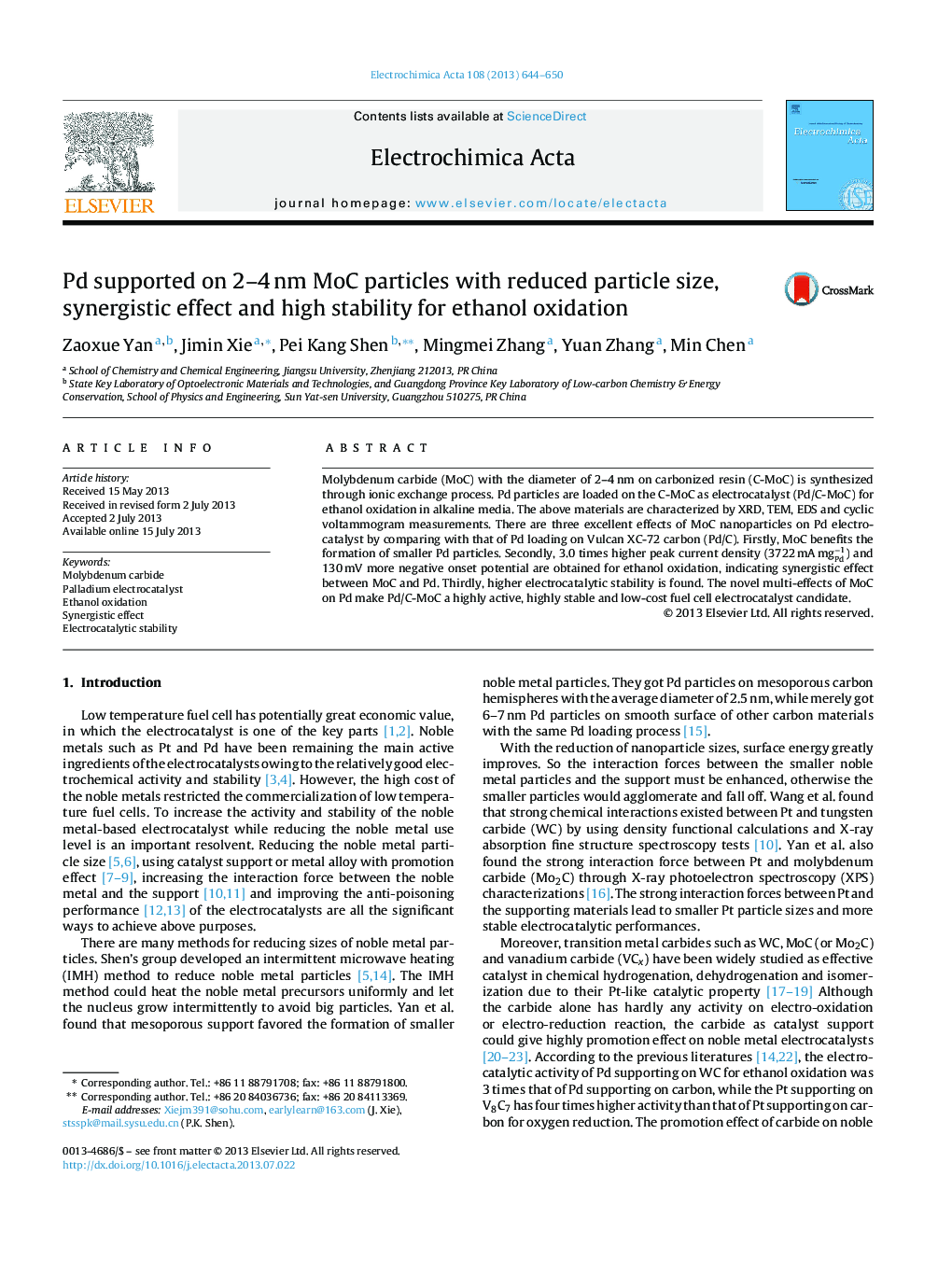| Article ID | Journal | Published Year | Pages | File Type |
|---|---|---|---|---|
| 186848 | Electrochimica Acta | 2013 | 7 Pages |
•MoC particles (2–4 nm) are synthesized through ion-exchange route.•MoC favors stable formation of smaller Pd particles (2 nm).•Pd/MoC shows excellent activity due to synergistic effect.•Pd/MoC shows excellent stability.
Molybdenum carbide (MoC) with the diameter of 2–4 nm on carbonized resin (C-MoC) is synthesized through ionic exchange process. Pd particles are loaded on the C-MoC as electrocatalyst (Pd/C-MoC) for ethanol oxidation in alkaline media. The above materials are characterized by XRD, TEM, EDS and cyclic voltammogram measurements. There are three excellent effects of MoC nanoparticles on Pd electrocatalyst by comparing with that of Pd loading on Vulcan XC-72 carbon (Pd/C). Firstly, MoC benefits the formation of smaller Pd particles. Secondly, 3.0 times higher peak current density (3722 mA mgPd−1) and 130 mV more negative onset potential are obtained for ethanol oxidation, indicating synergistic effect between MoC and Pd. Thirdly, higher electrocatalytic stability is found. The novel multi-effects of MoC on Pd make Pd/C-MoC a highly active, highly stable and low-cost fuel cell electrocatalyst candidate.
